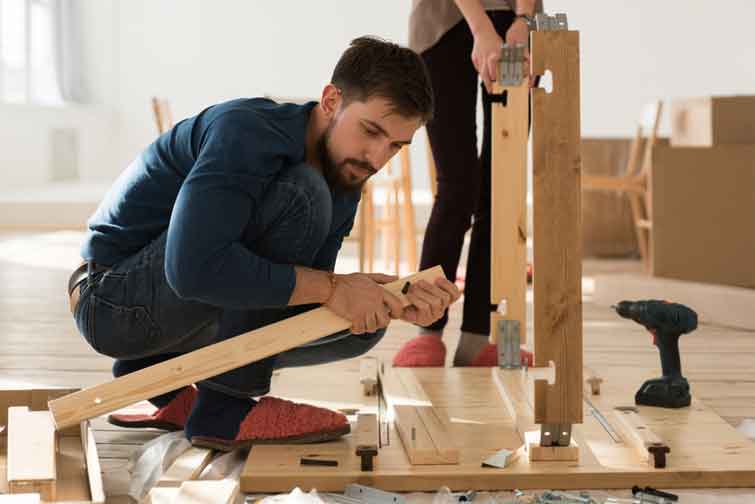Ready to assemble furniture has had a bad rap in years past. Cheap materials, undecipherable instructions and a need for massive amounts of aspirin never really seemed to add up to what you might have saved. Like many things though, RTA furniture has come a long way.
Although I was shocked after plunking down a wad of money at a major furniture store to discover that it was shipped in several boxes. Wait, hold the phone, I was so excited to own something brand new, that I chose and adored, rather than the hand-me-down, thrift store decor I was accustomed to, it never occurred to tool challenged me that I would have to assemble it.
Before Buying Ready to Assemble Furniture
Know your material. There is a pecking order to furniture material. Choose accordingly. At the lowest end of the spectrum are particleboard, medium density fiberboard and plywood. These are generally cheaper, but not particularly strong, browse around this website. If you foresee ever having to take it apart, chances are it will not survive the operation.
Laminate and wood veneer create passable, middle-of-the-road furniture pieces. Made from layers of plastic, plywood and/or thin slices of quality wood. In fact, since it looks like wood, but isn’t entirely, it won’t fade and is quite durable for the price.
Solid hardwood. Strong, and impressive hardwood will not be mistaken for particleboard, either when entertaining, or at the cash register. You will pay more for this material, but it is the sturdiest and often has interlocking, dovetailed joints.
Inspect floor models. If, at closer inspection, the piece of furniture you are eying up has a chipped veneer, gaps or unattractive wear and tear, don’t be fooled into thinking you will take better care of your furniture. Expect yours to wear the same, or worse than the piece calmly sitting on the showroom floor.
Ask Questions. Namely, can it be returned? What are the rules? I bought a coffee table from a furniture store last year. It seemed perfect, but once I brought it home realized immediately the color clashed with the rest of the room. Little did I know that I would only receive a portion of my money back?
How to Avoid Common Problems

Avoid splitting the wood. When driving a nail into the wood, place a strip of painters tape over the area. This will keep the wood, especially manufactured wood, together.
Avoid smashing your thumb. Invest in a nifty little tool that is magnetized and holds onto the nail or screw to keep your hands intact.
Avoid gaps. Like a basting stitch in sewing, place all the screws but refrain from tightly them all the way down until the pieces are together. This also avoids irreparable mistakes. I once put a plant stand together, upside down. It was still usable, and only I knew it was wrong. At least that’s what I told myself.

